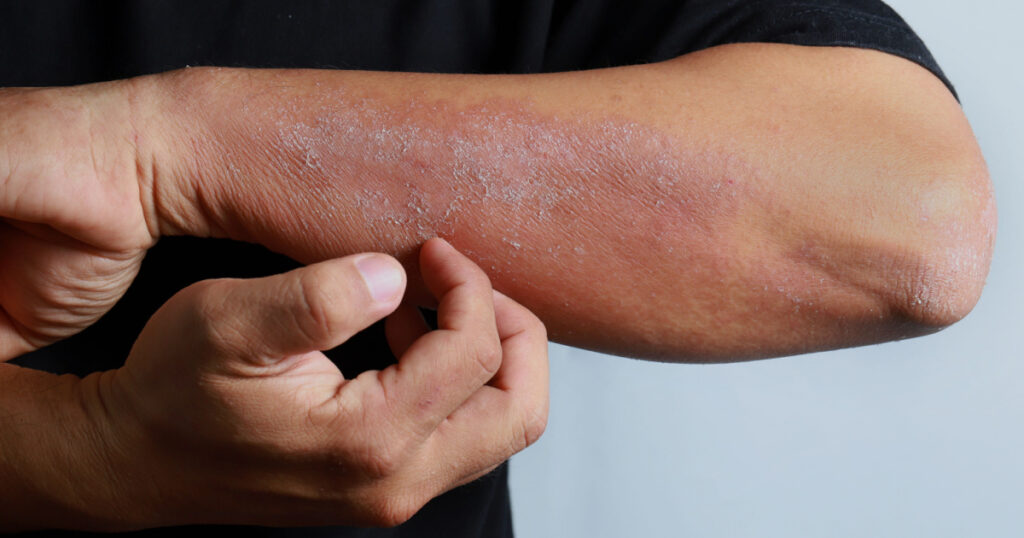Dyshidrotic eczema, prevalent in the spring, is a manageable but incurable skin condition characterized by small, itchy blisters. Eczema, a group of diseases causing skin inflammation, affects an estimated 35 million people in the U.S., with seventy percent of cases in children under five. During flare-ups, skin becomes red, itchy, and swollen with fluid-filled bumps that may ooze and crust. Common triggers include allergic reactions and genetics, but eczema is not contagious.
Dyshidrotic eczema (pompholyx) appears symmetrically on palms, fingers, and soles, marked by small, deep-seated vesicles resolving with scaling after a few weeks. It’s also known as acute vesicular hand dermatitis, palmoplantar eczema, and other terms depending on the affected area. Proper diagnosis is essential before treatment.
Common symptoms include deep-set blisters on hands and feet, itching, redness, flaking, scaly, cracked skin, and pain. Those with contact dermatitis, atopic eczema, or hay fever are at higher risk. Infections can delay healing.
While there’s no cure, effective skincare can manage the condition. Conventional treatments include corticosteroid creams, UV light treatments, draining large blisters, antihistamines, and immune-suppressing ointments like Protopic and Elidel.

Natural remedies include maintaining clean, moisturized skin. Cold compresses, aloe vera, and oatmeal can reduce inflammation and soothe symptoms. Regularly applying these treatments can help manage eczema effectively..